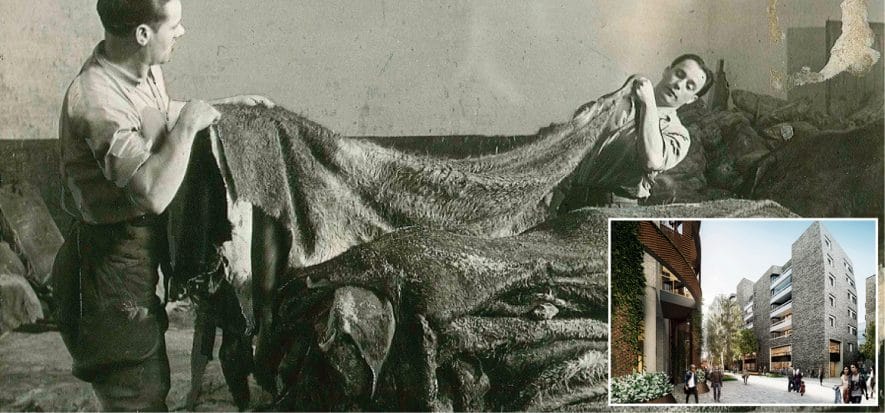Food and tanning. These are the two industries that in the second half of the 16th century made Bermondsey into an important reference point in great London. Now these two realities are once again alive in the modern residential complex that is about to be built where once stood a brick wall that divided the tanning drums from the ovens in which Crosse & Blackwell’s desserts were baked. The creation of tanneries in the area was tied to the abundant presence of water from the Thames, trees, livestock and cheap labor costs. Thanks to this series of factors, the Bermondsay’s tanning district grew quickly and by the end of the 18th century it was manufacturing one third of all the leather used in Great Britain. Tanneries popped up one after the other and the area at times hosted 11 tanneries. As the tanners’ production capacity increased, so did the wish to create new technologies to improve the manufacturing process. What followed was the creation of the first splitter by the Bevington brothers who patented in the 19th century, making the machine the first one in Bermondsey and the world. Leather consumption, along with the spaces to raise livestock, changed throughout time and many tanners moved. The last tannery in Bermondsey, SoRowe & Son on Tanner Street, was closed in 1997. The new modern residential complex will be built in place of one of the tanneries that closed: it will be called The Tannery. The first phase of the project, according to what reported by homesproperty.co.uk, will cost 220 million pounds.
Images taken from Southwark local History Library and propertypassbook.com










